
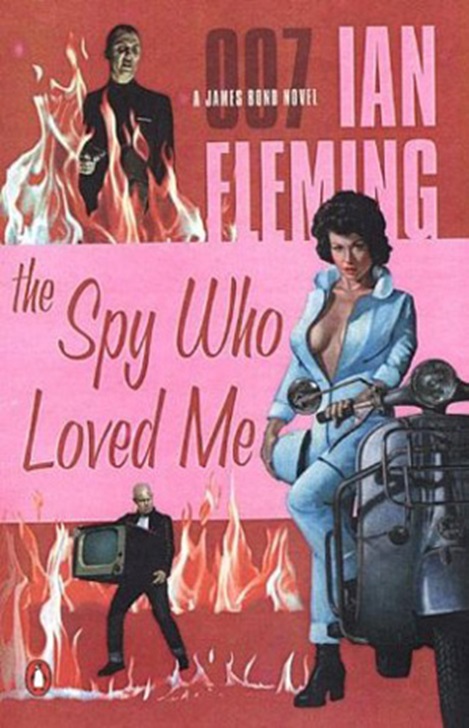
The Spy Who Loved Me (TSWLM) was one of those pivotal movies, coming as it did at a crossroads of events both global and personal. The novel itself, published posthumously, was one which Ian Fleming was unhappy with and the rights to the name only were given to Broccoli and Saltzman. It was an experiment of sorts, told from the first person of a Canadian lady, remembering ‘ the Spy Who Loved Me’. Nonetheless, Broccoli and Saltzman announced in 1975 just after the release of the Man With The Golden Gun that work had indeed started on developing TSWLM as the next Bond feature, with Guy Hamilton returning in director’s chair.
Things were not to go smoothly at all. Harry Saltzman’s debt problems finally made him completely bankrupt and a lengthy set of proceedings occurred to determine the fate of his half of EON productions. Since legal proceedings were ongoing, work had to stop on production, and Guy Hamilton pulled out. Ultimately, it was United Artists themselves who took ownership of Saltzmans shares in the company, as a (theoretically) silent partner. So Broccoli for the first time was going it alone with Bond, as sole producer. But in what direction would he go? A series of famous authors tackled ideas for a screenplay – Anthony Burgess, John Landis and others. Lewis Gilbert stepped in to the director’s chair, 10 years after directing You Only Live Twice. Ken Adams also returned as the set designer. During this enforced hiatus, the place of Bond in culture had started to change significantly. A new generation were discovering Bond. Bond had started as hip and edgy, had developed into an anachronism and by the time of “The Man With The Golden Gun”(MWTGG) was an uncomfortable hybrid. In 1974 though ITV started airing the Bond movies, and also in that year ABC aired Doctor No and Thunderball.. the audiences were huge, and new audiences were discovering Bond. The Bond Official Fan Club started, as these new fans sought to find out more about the origins and development of Bond.
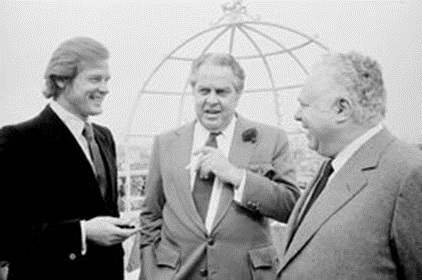
Roger Moore, Albert (Cubby) Brocolli and Harry Saltzman
To make matters more complicated, Kevin McClory, the producer involved in a legal battle over Thunderball who became the de facto producer of that movie, came back in the picture.. announcing that his non competition agreement had expired, and he had a new script based on Thunderball, co-written by himself, Sean Connery and Len Deighton. The pressure was really on – how could Broccoli get past the bad reviews and box office of MWTGG, and capitalize on this potential new younger audience, while staving off the enthusiasm amongst Bond fans that a new Sean Connery Bond film was on the horizon..? The answer – go big. The last two movies had capitalized on the popular cinema of the day, Blaxploitation and martial arts movies.. but in an era when cinema was full of nostalgia or flawed and fallible (anti) heroes (The Sting, The Godfather, Papillon, Chinatown, The Outlaw Josey Wales), Bond had to reclaim his own identity. Broccoli somehow talked the studio into a budget nearly twice as much as MWTGG, and started working in earnest on producing the biggest Bond yet. Lewis Gilbert brought on Christopher Wood to work on the script – a huge fan of the novels and films, his role was to keep the tone of the books wherever possible. It was Gilbert who took it upon himself to keep a light touch and ensure humour was kept in the mix. Inspired by a sea laboratory in Okinawa which rose out of the sea, a new villain who believed that only the sea was pure, then mixed with elements of You Only Live Twice (the tanker swallowing submarines was a direct rip off of the spacecraft swallowing action in YOLT) finished off the plot.
Then disaster struck again – Kevin McClory struck a plagiarism suit on the production, which meant there was an injunction in place and production halted again, revolving around the use of Blofeld in the movie. This was eventually overturned when Blofeld was replaced by Stromberg and filming commenced. For the pre-title sequence, Broccoli knew it was important to make a statement, so when his step son and assistant producer Michael Wilson saw a magazine with an advert photographing a man skiing off a mountain, he approached the man – Rick Sylvester- and asked him to do the stunt for the movie. Sylvester said the photos were manufactured to make it look that way, but the stunt had not been done.. but it could be! And so he and the second unit director John Glen went to a remote island – Baffin Island - in the Northwest Territories and waited nearly 3 weeks while the budget mounted, waiting for a weather window. Christopher Wood added the idea of the parachute, and history was made, with Willy Bogner returning to Bond to do the skiing scenes required for the rest of the opening scene.
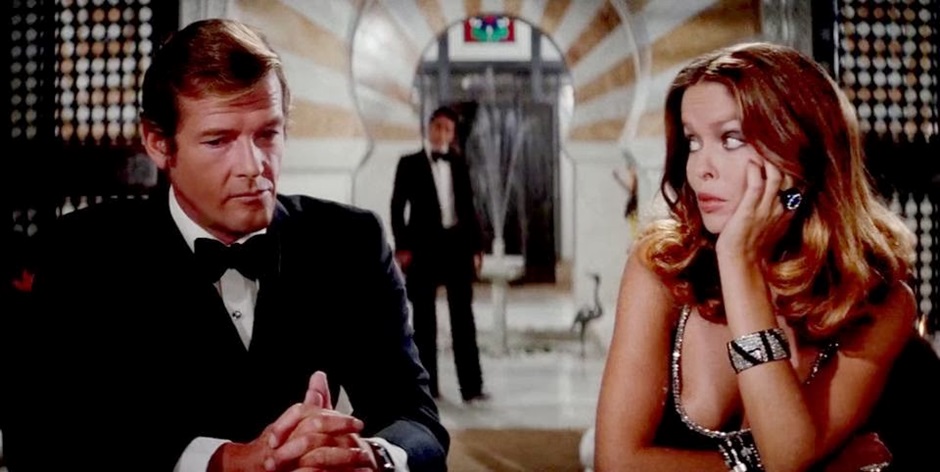
The rest of the movie carried on with Curt Jurgens as the villain, Richard Kiel playing Jaws for the first time – a character loosely based on ‘Horror’ from the book, the only element for the novel to survive. Also Walter Gotell, who played a minor character in From Russia With Love, made his first appearance as General Gogol, the head of KGB – a role he would repeat in the next 5 movies. Amongst the other minor roles was George Baker, friend of Fleming’s who had appeared in On Her Majesty’s Secret Service, and Shane Rimmer – an American who lived in the UK so was often used in British productions when an American was needed.
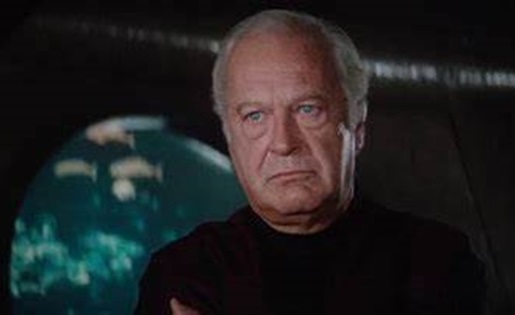
Most importantly, the search for an actress to play Major Amasaova resulted in casting Barbara Bach, future wife of Ringo Starr (lucky guy..). Her role in particular showed a difference, as she was no arm candy for Bond who slowed him down, or accidentally pressed buttons with her posterior – she was Bond’s equal, an agent known as triple X in the KGB.
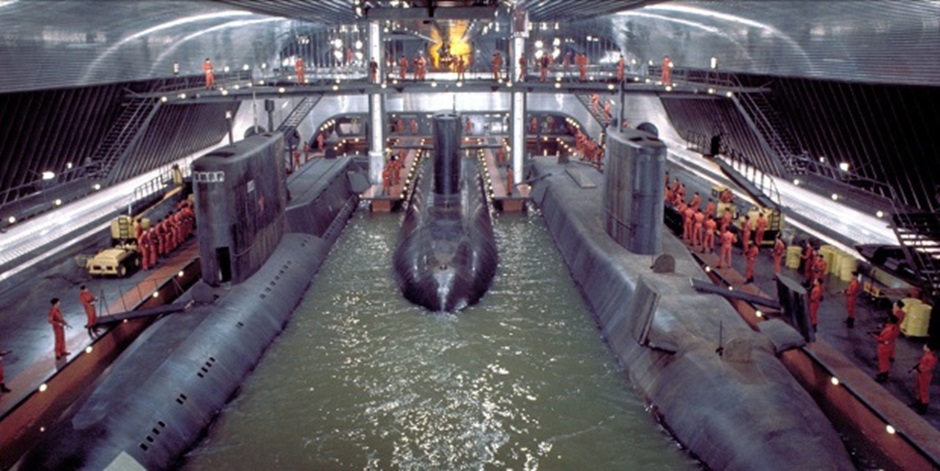
Locations included Porto Cervo in Sardinia, Egypt, Malta, Scotland , Switzerland and of course Baffin Island. It was back home in Pinewood Studios that Ken Adams was faced with a problem – the key interior set was to be huge, and required submarines in water – no tank or set was big enough – the answer..? Broccoli built it – building the interior set and building the studio around it – this was to become the famous 007 Stage, which cost 1.8 million dollars, and represented a huge gift from Broccoli to the British film industry.
The tanker itself was to be real – Shell gave permission to use their tanker for free – as long as they insured it. However, the cost of insuring was 50,000 dollars a day – a staggering sum then, and the crew realized an empty tanker is more dangerous than a full one when you start setting off pyrotechnics to make a movie. And so, genius Derek Meddings built the miniature. I say miniature, but it was in fact over 60 feet long, with its own inboard motor!
Broccoli had proved he could handle the big ideas and big budget all by himself. When his crew in Egypt asked if they could work through with no days off because the food was so bad, Broccoli said we will bring in all the food from the UK – when the container arrived, it had been emptied – so Broccoli took it on himself to buy all the pans needed, and made Spaghetti Bolognese himself, for the entire crew – an act which endeared him to them immensely. The movie was finished off with music by Marvin Hamlisch, since John Barry had become a tax recluse from the UK at this point. This resulted in a significantly modernized sound, which added to the feeling at the time of Bond being rejuvenated. His theme song, ‘Nobody Does It Better’ became one of the most popular and enduring of the series.
Clearly this is the film which rescued Bond and ensured the series would continue. But how does it fare now with the benefit of hindsight? Is it the pinnacle of Moore’s era in the tuxedo, or is it over the top fantasy scuppered by 70’s foibles? Come along on Saturday and make up your own mind!
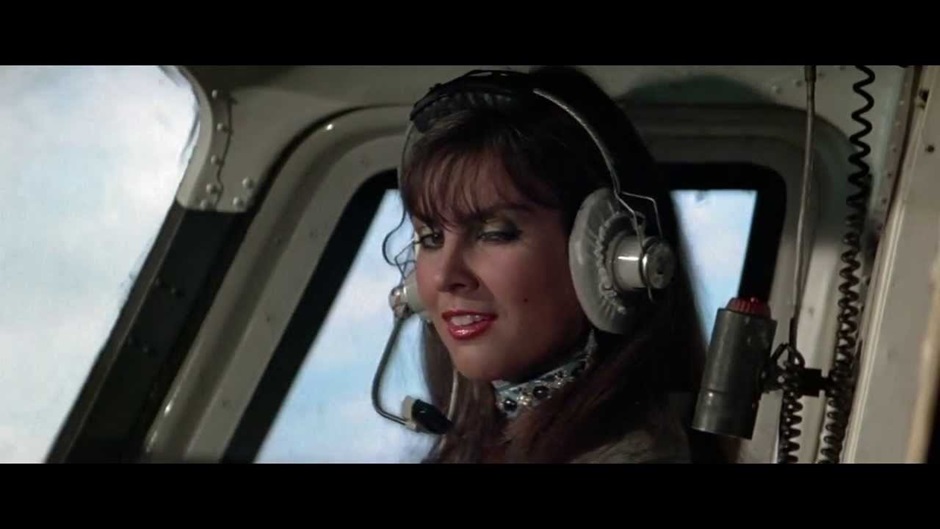
Trivia
The closing credits say, "James Bond will return in For Your Eyes Only" but, because of the successes of Star Wars: Episode IV - A New Hope and Close Encounters of the Third Kind, Moonraker was chosen.
First James Bond movie to be recorded in Dolby Stereo.
The only James Bond movie in which M's (Bernard Lee) first name (Miles) is said. In the books, his name was said to be Admiral Sir Miles Messervy in the novel "The Man With The Golden Gun". It is only the 2nd time in the series that M calls Bond by his first name James and not 007 or Bond - the 1st was On Her Majesty's Secret Service. Q is referred to by his real name (Major Geoffrey Boothroyd), as in Dr. No and From Russia with Love.
The Carl Stromberg character in this film actually has webbed hands, however, they often go unnoticed by viewers on video and DVD compared to when the movie was released in cinemas - a bigger image on a theatre screen makes them more noticeable.
After the van breaks down, the theme from Lawrence of Arabia plays when Bond and XXX walk across the desert. One young assistant in the cutting-room put it in as a joke, and it brought laughs to the team and they kept it in the final film. As such, this was the first James Bond film to use score from another movie.
After the film's release, demand for white Lotus Esprit cars surged to the point that new customers had to be placed on a three-year waiting list.
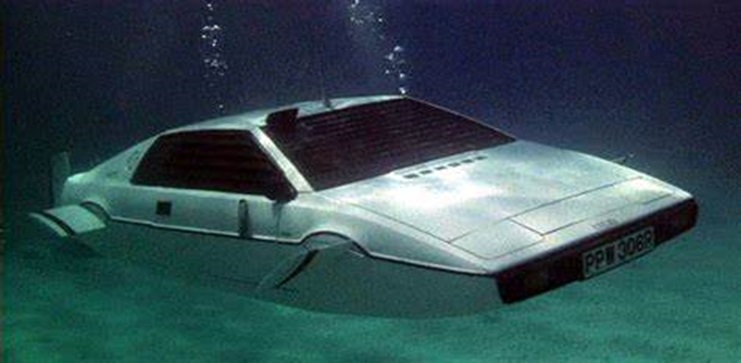
First Bond film to make significant references to Bond's past, including his recruitment to the British Secret Service from the Royal Navy, his "many lady friends", and his marriage to Tracy in On Her Majesty's Secret Service.
The first appearance of recurring character Defence Minister Frederick Gray (played by Geoffrey Keen). While walking along the docks, Bond addresses him as "Freddy" for the only time in the series (in all subsequent films, he uses the more formal address "Minister").
The film introduced a spy sea scooter known as a "wetbike" (better known now as a jet ski) to the world, sparking a new water-sport industry. This gadget was commonly referred to as the "motorbike that rides on water."
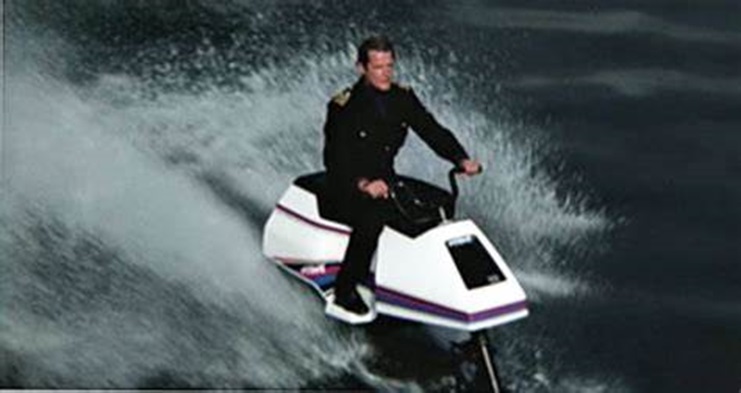
James Mason was considered for the part of villain Karl Stromberg. His famous role as Jules Verne's Captain Nemo in Walt Disney's 20000 Leagues Under the Sea was a major element in his consideration. He would also be considered as main villain Hugo Drax in the next Bond movie Moonraker.
When James Bond drives the Wet Nellie up onto the beach, a small boy points to the car in the water. This is Richard George Kiel, son of actor Richard Kiel who portrayed Jaws.
© Stephen's Movie Guide
Inverurie Website Design